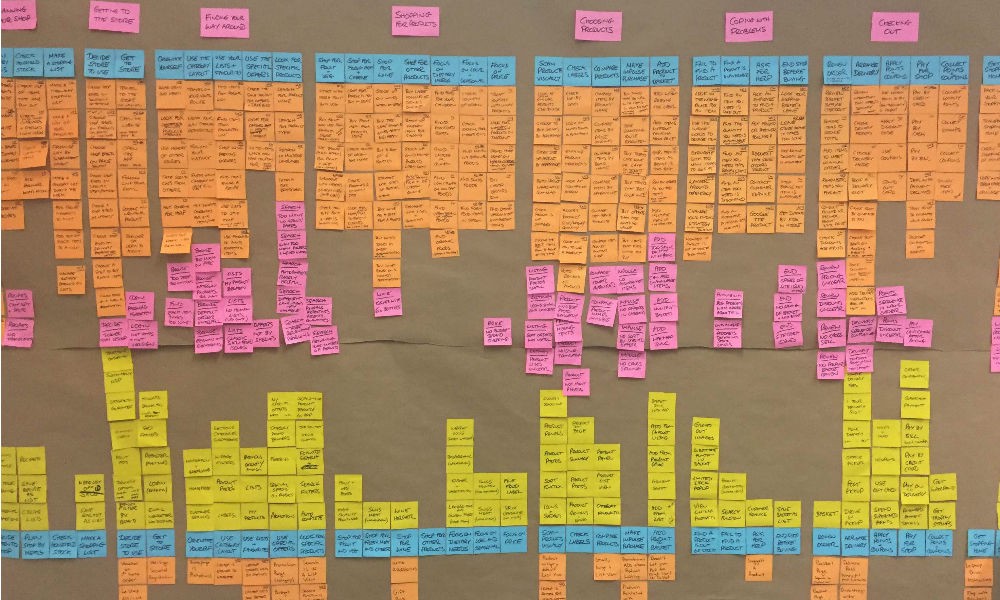Improving employee experience is fast becoming a priority for organisations as research indicates a direct correlation between engagement & productivity, retention and an upturn in customer experience.
HR teams are starting to adopt frameworks their Marketing & Product counterparts have been applying for years, with employees as their ‘customers’. Just as customer touch points have been reimagined or simplified to optimise overall experience, HR leaders can start to implement similar adjustments to their candidate and employee journey.
– –
Employee-first, design thinking for the workplace
The most significant shift needed is moving beyond a process and program driven mindset to one that is firmly centred on the experience for the employee.
Let’s start with a few basic principles:
+ Personas – Who are your ‘customers’ – build profiles of workers who represent a segment of your organisation, for example, new hires, emerging leaders, millennials or senior executives. Begin with needs-based assessment and segmentation, grouping employees into clusters based on similar drivers and desires. Gain these insights from behavioural observations, digital interactions, workshops, employee surveys or interviews.
+ Journey maps – Map the moments that matter for employees at each employee lifecycle stage – where they happen, what they currently do, how they feel and where are the gaps. This effort will help define a set of employee initiatives to build, test, and iterate.
So, how does this relate to employee wellbeing?
87% of HR leaders say improved retention is a high, if not critical, priority. Employee benefits, particularly wellbeing and flexible working, consistently feature in the top 3 reasons employees will stay or leave an organisation. Absenteeism and lost productivity are costing Australian businesses losses to the tune of $54B. If wellbeing has such an impact on the candidate or employee decision-making process and an organisation’s bottom line, will a generic, one-size-fits-all wellness program deliver an exceptional employee experience? Pretty unlikely.
Employees have a range of needs influenced by gender, generation, culture and priorities and often carry strong opinions on what they value in this space. Organisations have a unique opportunity to design a wellbeing experience, within or parallel to an over-arching employee experience, that appeals to the varying needs of bespoke employee groups.
– –
Here’s the model in action for employee wellbeing experience:
1. Understand the needs of employees
Similar to customer personas, understand what makes your employees tick. What are their goals, challenges, values and drivers – and this is not just what they tell you, layer it with behavioural observations and insights where possible.
For wellbeing specifically, your employee assessment process should be holistic and cover general health, happiness (in all dimensions of self) and lifestyle behaviours. Once these are identified, you can start to segment employees into clusters and trends: key drivers, interests and current vs future wellbeing requirements. These groups are often not aligned with roles, functions or generations so let the data guide the insights & process
2. Map your employee wellbeing journey
Design thinking is critical to identify how and where employees will meaningfully engage with your wellbeing program.
Typically, a journey map is a visual representation of employee touch points at various stages of their lifecycle, generally focused on moments that matter, the most critical or engaging milestones of your employee’s time at your organisation.
A journey map plots the experience at each stage of the employee lifecycle – from candidate to onboarding, L & D, performance and career progression to their next play. When analysing each stage, critically understand – what is working, what is not and identify any gaps – then design an experience that will satisfy (most) employees’ needs, cultivate the desired culture and align to required business outcomes.
The #1 failure of wellbeing programs is non-participation. Primarily due to lack of awareness, poor communication of the value and low engagement due to non-personalised approaches.
When mapping employee wellbeing experience for our clients, WellWork considers the following at each employee lifecycle stage: goals, touch points – human and digital, actions, emotions and opportunities.
Through this process, we can pinpoint programs and touch points that will deliver a value-add wellbeing experience. This also minimises risk as you have identified what employees need and how best to engage them.
3. Build agile wellbeing solutions
Learnings from the journey mapping exercise, will help design and deliver agile wellbeing programs and treatments. An important distinction here, your program goals will remain consistent and relatively long-term, how you get there can remain nimble.
Building a clear picture of what makes your people tick, helps identify new and effective ways to deliver your wellbeing experience. Lean on experts to propose new ideas and evidence-based solutions, turn these into pilots, measure how employees engage and know when to sustain or pivot. At your monthly or quarterly review, think about: How should we prioritise employee groups and experiences? What would be the impact if we add or change elements? Are any current experiences detracting from the desired state? What does 2.0 or 3.0 look like?
– –
“Think big, act small and fail fast” are terms that are often used to describe agile development. These are also possible when designing an employee or wellbeing experience.
We have access to more people data & insights than ever before through employee feedback, enterprise platforms and wearables. These insights should be front & centre when building a case for, designing and implementing your enterprise wellbeing strategy.
By leveraging proven experience mapping and human centred design, you can ensure any investment into your wellbeing strategy delivers an exponential return for you, and your people.
+ Follow WellWork, we think differently about employee wellbeing.
Our enterprise wellbeing solutions diagnose people insights, design Wellbeing As An Experience and deliver solutions through a premium network and integrated digital experiences.


